Many of you enjoyed the Carolina Wren sound recordings in the last blog. I love recording birds and listening to the results. But I especially enjoy looking at the spectrograms, where I can “see” the sounds and learn more about them. Birds’ songs and calls are a lot more interesting and complex than many people realize. The same holds true for their non-vocal sounds.
Mr. Carolina
I decided to go out on 3/10 and record our little male friend again. I know he’s male, because female Carolina Wrens don’t sing. That said, any number of female birds do sing. Just not Ms. Carolina. Female bird song has become an interesting area of study. I covered the topic a bit in “Birds Haven’t Changed.”
I ventured out a little later this time (5:45 instead of 5:15 a.m.). There wasn’t any wind or wind chime noise. A Northern Cardinal sang in the background, and the railyard was quiet. Here’s the song.
Here again are the first two songs for comparison.
Talk about song variety (and vocal agility).
Now, here’s the same bird calling (as it moved around). Note the more musical and sweeter quality of the songs.
Here’s a recent pic of a male or female. To me, it perfectly captures this “stocky and large-headed” species. It also captures a bird whose preferred habitat is dense cover. Carolina Wrens aren’t creatures of open country.

More Signs of Spring
Let’s look at some more “signs of spring” photos that didn’t make the cut as I put together “New Beginnings.” And let’s start with the Brown Pelican. There’s been an unusual influx of these birds recently into some of the branches and creeks of the Elizabeth River in South Hampton Roads. Some of the birds may be spring migrants. It could be the food abundance, or the warmer water and shelter these areas provide.
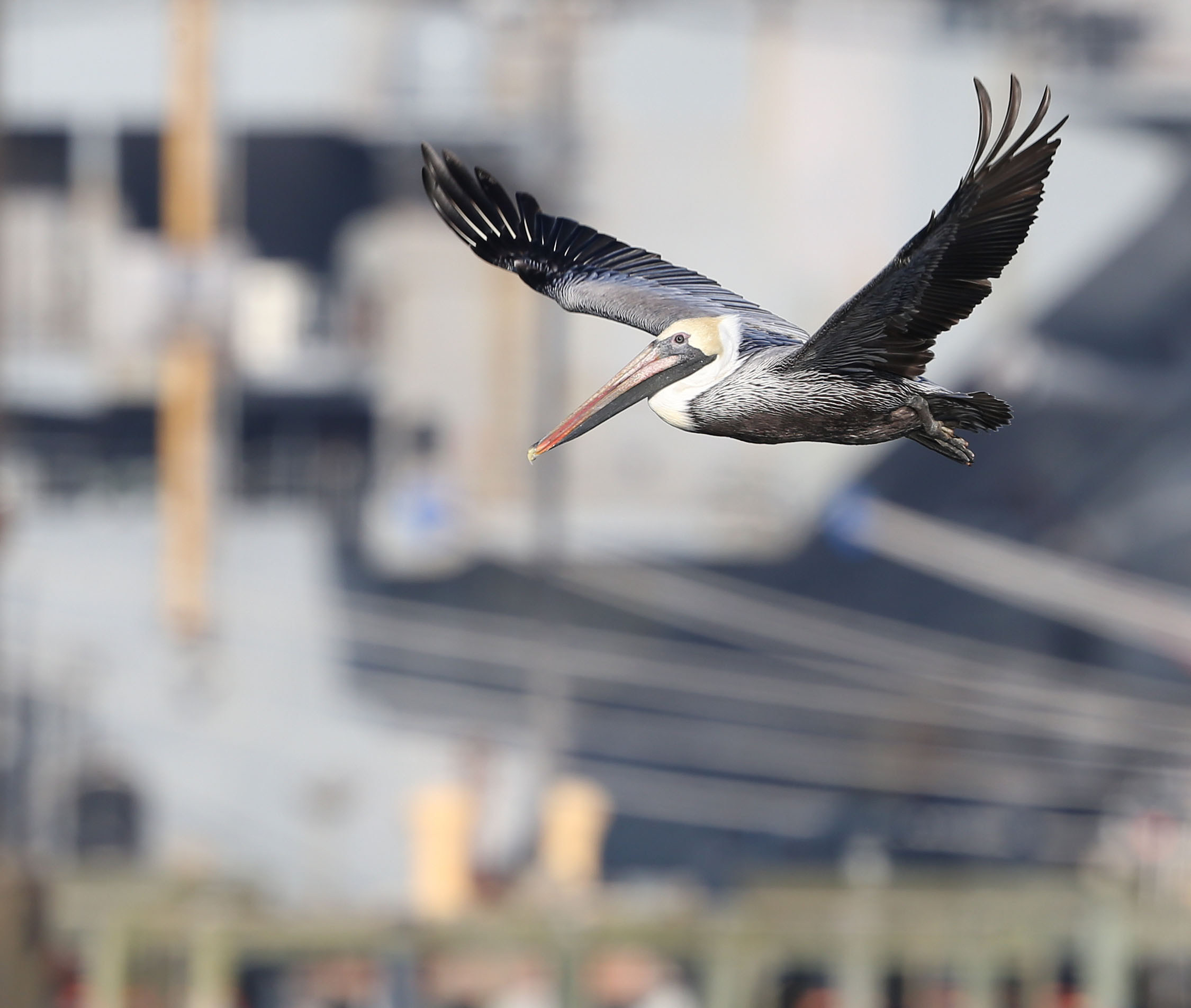
Below is an adult undergoing its spring molt. I asked the bird to turn its head slightly for the shoot, and it accommodated. Note the back and side of its neck, which is slowly turning a dark reddish-brown. The head is becoming yellower, too.

Here’s another bird undergoing a spring molt—a newly arrived Laughing Gull. It’s acquiring its dark head and reddish bill and legs. I found this bird on Scott’s Creek in Portsmouth on 2/28, the same day I found my first spring-arriving Osprey.
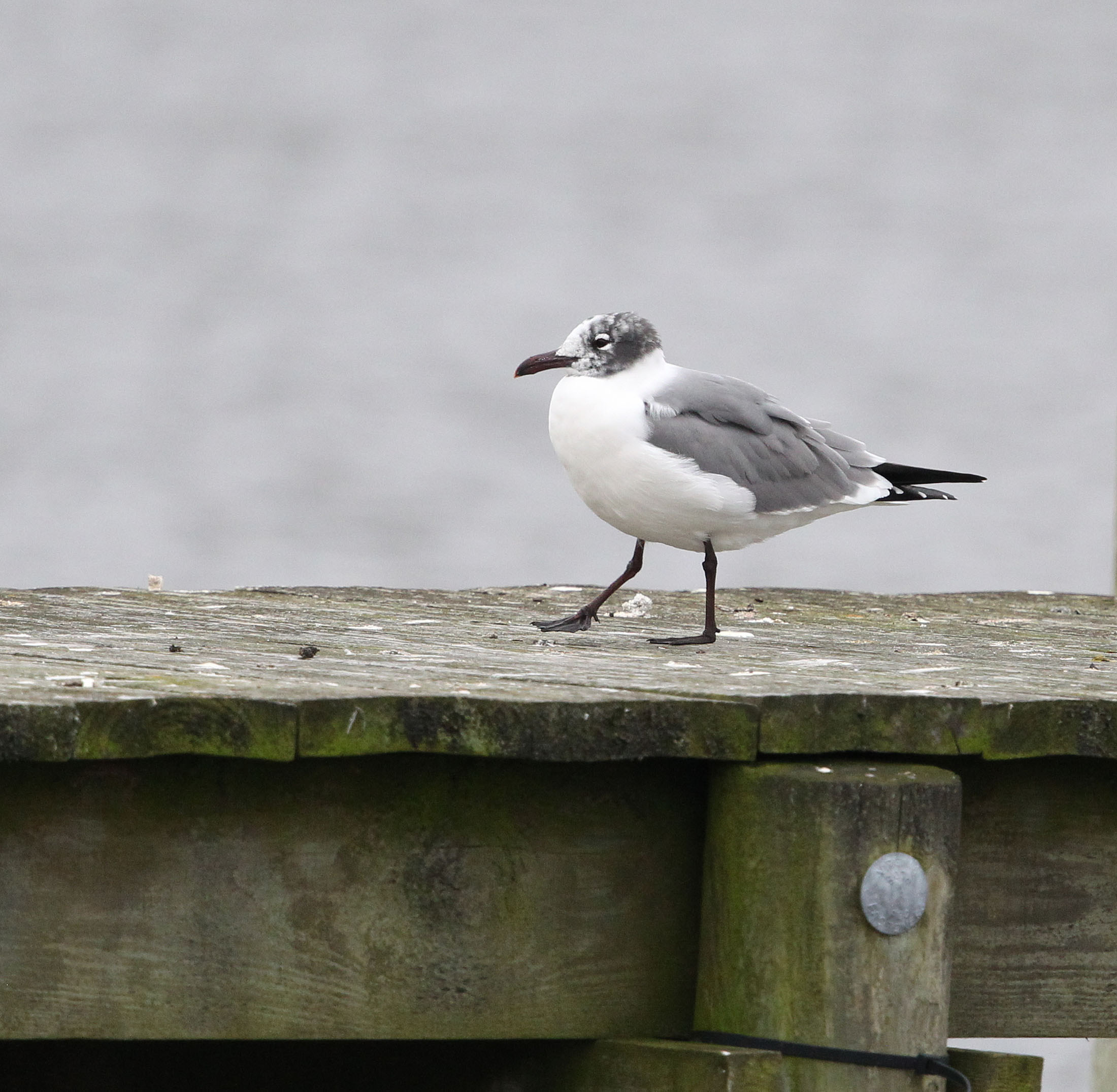
Speaking of Ospreys, here’s an Osprey pair on nest on a large steel pile (for want of a better word) in the Elizabeth River. It was early morning. It was also a “Chelsea morning.” These new arrivals may have nested here last year. That nest failed. This year, they’ve been busy building a new one as well as engaging in copulation behavior. Copulation is repeated often, which is probably true for many birds during breeding season.
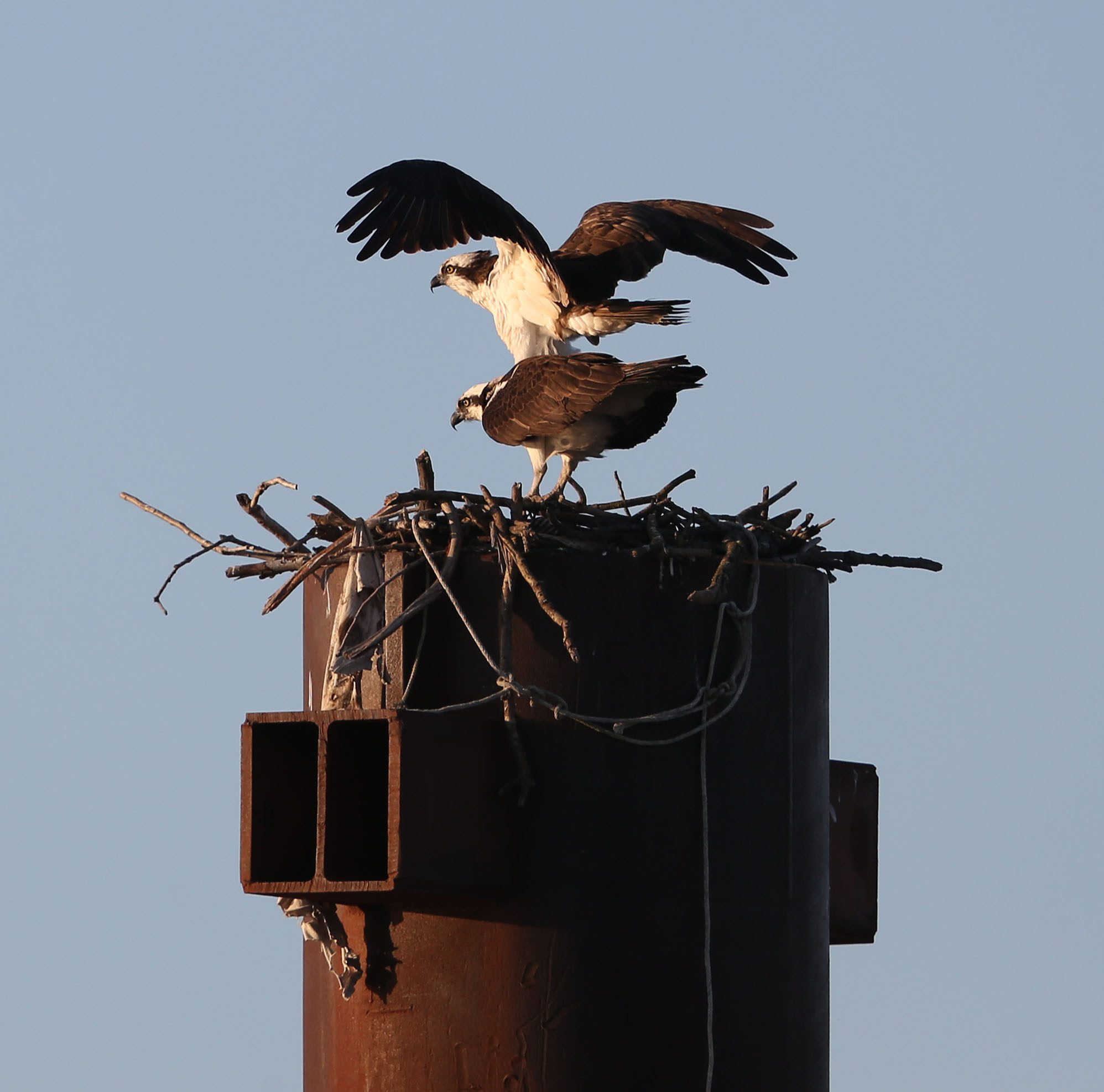
Notice the rope and dirty rag that have been added to the nest. As we discussed the difference between Bald Eagle and Osprey nests, Reese Lukei of the Center for Conservation Biology told me that Ospreys were the “junk collectors,” whereas eagles just use sticks. Of course, eagles line the nest cup with finer and softer natural material. Here’s a Bald Eagle nest. The male is about to take over the incubation duties.
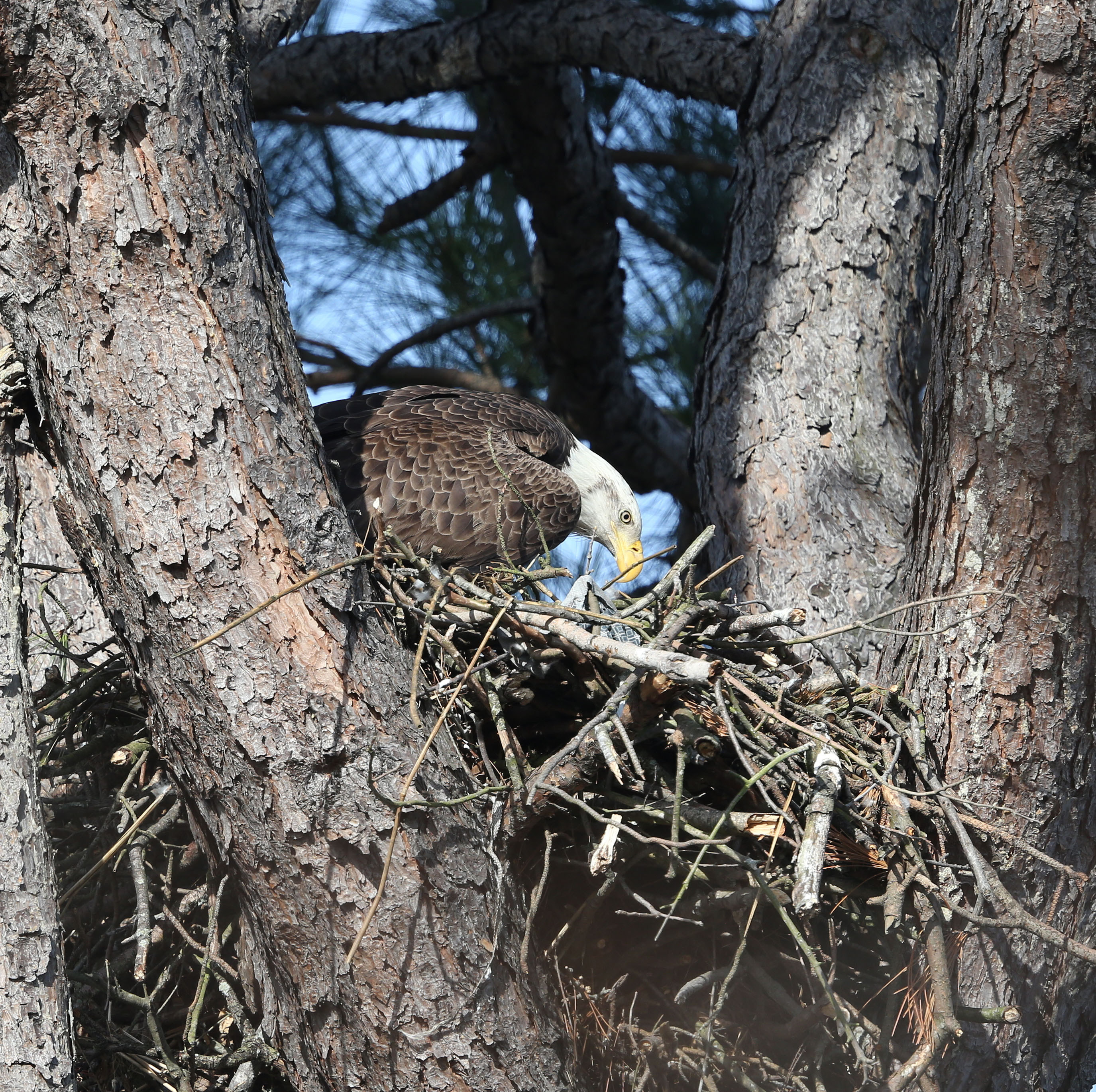
Lastly, here’s something I’ve never seen before, a Double-crested Cormorant with double crests! These are only visible on adults during the breeding season. I made a big deal about the birds’ gape, their webbed toes, and their antics in “A Few Random Thoughts,” but I had nothing to say there about their crests. Now, I can say something. The photo is underexposed and I missed the jade eye, but I’ll settle for a shot any day that captures something special.
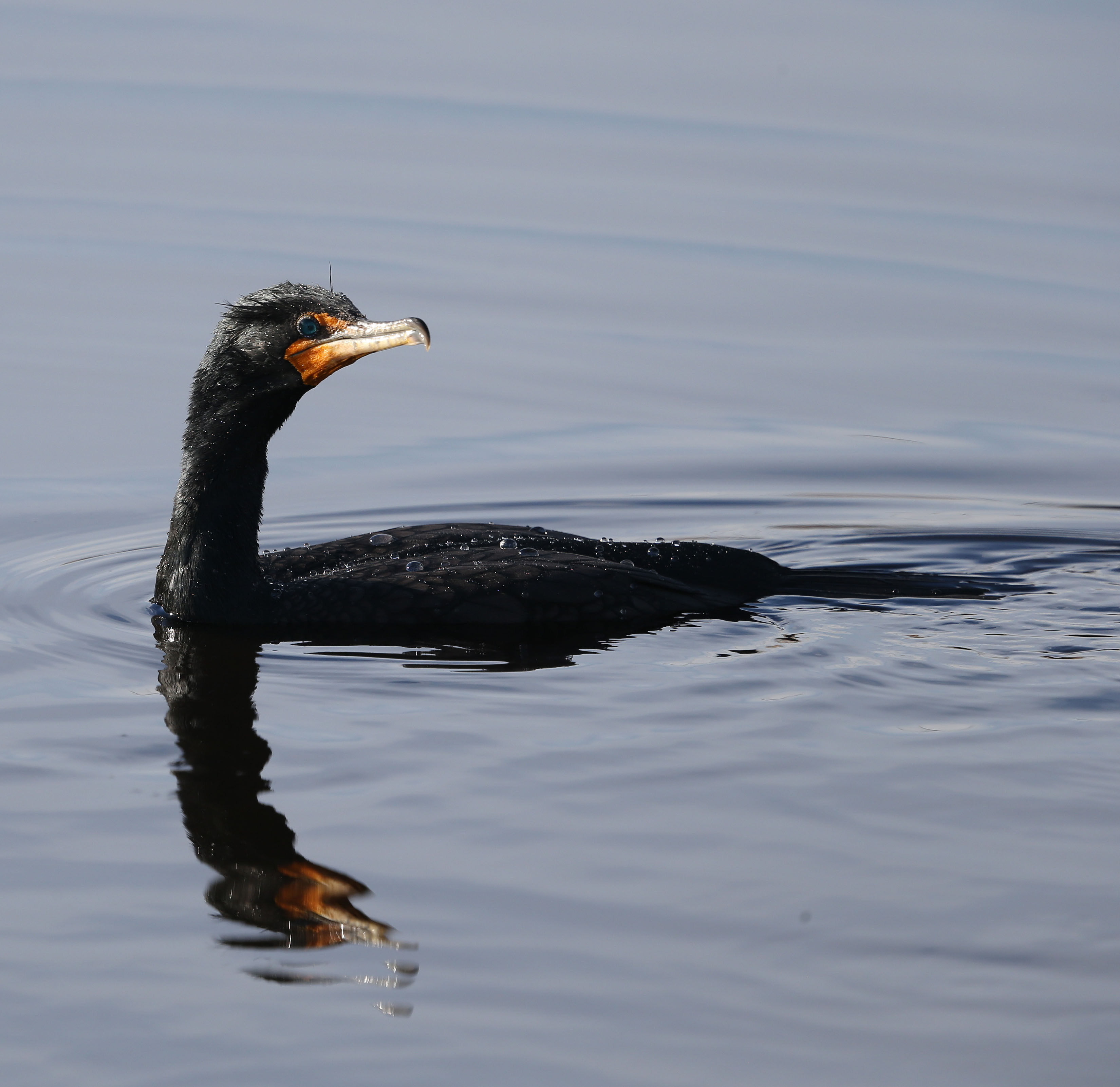
Interesting blog! Check out the latest issue of Va wildlife. You are quoted in a section on Paradise Park in Portsmouth.
LikeLike
Bill, so good to hear from you. Congratulations on making the cover of the 2021 Keep Chesapeake Beautiful Calendar. Contact me some time, and let me know how you are.
LikeLike
Great pelican pictures! I have been trying my whole adult life to get a good shot, but it’s like they are messing with me. All I tend to get are rear ends!
LikeLike
Thanks so much. I live near the river and with this influx, it hasn’t been hard to take good photos of these birds. Often, they fly in quite close. If you want to get close to and take good photos of pelicans, either head to Elizabeth River Park or better yet, head to Phoebus Waterfront Park in Hampton. Go to either place now, and you won’t be disappointed.
LikeLike
Hi Dave,
I love my backyard Carolina Wrens…they are fine, vocal little birds with tons of personality. I worry when I don’t see them for a couple of days…they especially love the mealworms I put out for the bluebirds. Thanks for the great shot of the double crested cormorant…most of my encounters with them are from a distance, so I don’t see the characteristic that is their namesake. No sign of them yet here in the Susquehanna Valley…soon! Love your blog…keep up the good work!
Terry Webster
LikeLike
Thanks, Terry. You made my day. Yes, Carolina Wrens are great little birds and so much fun to watch and listen to. That was a fortunate photo of the cormorant. Ironically, just a few months ago I researched how the bird got its common name. I didn’t know.
LikeLike
Hi Dave – I love your pictures. Where is the best location to see the eagles’ nest?
LikeLike
Hi Katherine, Thanks. I’ve been asked not to reveal the location both by the person who told me about the nest and also by the folks in the immediate neighborhood. Very glad you’re enjoying the blog!
LikeLike
O.M.G.!!! The variety of vocalizations from that tiny brown powerhouse of a Wren!!!! thanks for putting the calls side by side for listening distinction. Awesome! Also, as soon as I read the reference to Joni’s “Chelsea Morning” the tune wrapped around my brain. Love Joni! So then I followed your link and traveled down the rabbit hole of JM music for a while. Nostalgic beauty. Many thanks for all.
LikeLike
Susie, What a wonderful comment! I thought putting those vocalizations side by side would be helpful and fun. Really got a kick out of your response to “Chelsea Morning.”
LikeLike
Fantastic photos Dave, you have some great birds nearby, like the pelican and ospreys, though I’m just as happy seeing something a lot smaller in my neighbourhood!
LikeLike
Thanks, Andrea!
LikeLiked by 1 person